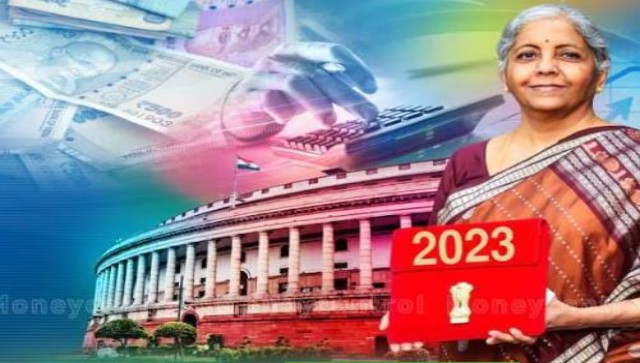The Indian tax buoyancy has posed a compelling case for rationalizing the extant tax burdens of the Indian populace, particularly of the middle-class. The latest statistics on exponential Income Tax collections, burgeoning Goods and Service Tax (GST) revenue, and up ticking economic environment, annihilate all and any reticence towards further tax progressivity to ensure increased availability of disposable income in the hands of the middle-class of India. The middle-class of this country are the major contributors to the coffers of the Indian exchequer by discharging their tax liabilities through both the direct as well as indirect route. Since ‘two-thirds’ of the Indian population is tax-exempt and the ‘super rich’ in the population-pyramid being a handful, the claws of taxation naturally squeeze the middle-class the most. Presently, the middle-class of this country are approximately 30 percent of the Indian population. However, according to a recent report, in 2047, two out of every three Indians would fall into the middle class category with an income attracting tax burden of 5 percent to 30 percent of the net total income. According to the United Nations population headcount of India, in 2047 it would be 1.64 billion. Therefore, as a corollary, in 2047 approximately 1.09 billion people would be in the ‘middle-class’ demographic landscape of India. The paradigm shift in the population landscape coupled with increasing revenues of the government exchequer merits a sincere consideration to rejig the taxation system of India. Progressive approach, need of hour Tax laws of a nation have the potential to usher in principles of equity and fairness in the society they operate. Infusion of a progressive approach while shaping, reshaping, and executing tax laws can amount to complete metamorphosis of tax laws into a tool of socio-economic change. In the 21st century, the underlying object of any taxation law is to generate revenue for the sovereign to enable him/her to cater to varied needs of the ‘governed’. The roots of the said object can be traced back to Jeremy Bentham’s theory of utilitarianism which advocates maximising happiness and well-being for all the affected individuals; and the Indian taxation system is reminiscent of this approach. However, in adopting such a progressive approach, the sovereign must endeavour to strike a pragmatic balance between the interests of the taxpayers and beneficiaries of tax monies. Middle-class expectations As per a recent survey, majority of the Indian middle-class has been eyeing the fine print of the 2023 Budget with a racing beat and patient breath to see if the Indian economic approach is indeed pragmatic or not. Increment in the tax exemption limit from Rs. 2.5 lakh to Rs 5 lakh, deductions under Section 80C of the Income Tax Act, 1961, and exemption limits revolving around education loans under Section 80E of the Income Tax Act, 1961, are few areas over which the middle-class is anticipating solace. The maturity of Indian tax policies has gradually deepened. Retreating from its aggressive tax collection approach to adopting an invest-friendly outlook, Indian taxation framework has endeavoured to accommodate all–the Sabka Vishwas Legacy Dispute Resolution Scheme and guarding the shields down on retrospective taxation recovery are two such examples which reflect the pragmatism attributable in the tax-related decision making process. Assuage tax burden of middle class GST is the hallmark of a deeply embedded pragmatism in the Indian taxation system, though it was indeed the biggest tax reform in the history of independent India. However, the same had been carried as it was necessary in the public interest so to do. Therefore, the government at the helm should not shrug off from its duty to undertake yet another pragmatic decision to assuage the tax burden of the middle class of this country. Ergonomic pragmatism in the form of revising the threshold limits of income for tax exemption in a piecemeal but continuous fashion over a consecutive period of years would achieve two targets with a single arrow –It will gradually unburden the tax liability of the middle class, and secondly, owing to increasing population and the proportional increase of the middle class, the economy would not be subjected to any shock and awe from such unburdening as there wouldn’t be any dilution of tax collections. Further, in the long-term, it is quintessential for the policymakers to open the Pandora’s Box filled with problems around income inequality as it is the biggest roadblock in rolling out policy changes to unburden the Indian middle class. Therefore, adopting a pragmatic approach to unburden the Indian middle class from the otherwise felt onerous tax liabilities would benefit the Indian government as what it would lose in the swings, it would earn way more in the roundabouts. With additional inputs from Shrey Lodha, junior counsel at Rastogi Chambers. The writer is an Author, Chartered Accountant, lawyer and founder of Rastogi Chambers. He tweets at @AbhishekARasto1. Views expressed are personal. Read all the Latest News , Trending News , Cricket News , Bollywood News , India News and Entertainment News here. Follow us on Facebook, Twitter and Instagram.
Since ‘two-thirds’ of the Indian population is tax-exempt and the ‘super rich’ in the population-pyramid being a handful, the claws of taxation squeeze the middle-class
Advertisement
End of Article


)

)
)
)
)
)
)
)
)



